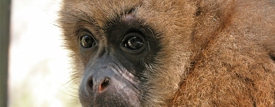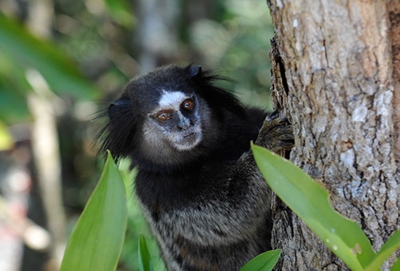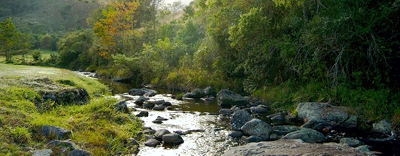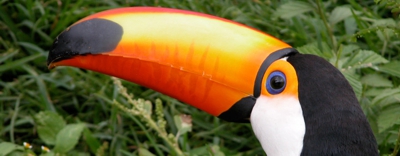

Destinations
Experiences
 |
L A
D A T C O T O U R
S |
 |
||||||||
| HOME | South America | Central America | Falkland Islands | Antarctica |
Unique Destinations |
Unique Experiences |
Newsstand | |||
 |
RESERVA DO IBITIPOCA
The Reserve |
 |
 |
 |
 |
ABOUT RESERVA DO IBITIPOCA - in their own words:
HISTORY
Reserva do Ibitipoca
was created in 1981 with the purchase of Fazenda do Engenho (Engenho’s Farm), one of the oldest farms in the region, dating back to the 19th century, and where today the Ibitipoca Reserve Lodge (guest house) is located. Over time other lands were acquired; most of these had been abandoned or used for cattle grazing in the vicinity of Ibitipoca State Park.
The main aim of the Reserve is the reforestation of native flora species and the formation of wildlife corridors, which entails joining fragments of woodlands with reforestation, providing larger spaces and better living conditions for the reproduction of wild animals. Besides the commitment to reforestation, since 2006 another ongoing project has been the reintroduction of wild animals that once inhabited the region but had become extinct there. Today the Reserve is composed of more than 50 properties. Of these, only 4 used to have residents who, by choice, moved to cities with better health and educational infrastructures for their children. Now the Reserve totals almost 4,000 hectares (approximately 90% of which is a protected), embracing three counties: Lima Duarte, Bias Fortes and Santa Rita do Ibitipoca.
The Reserva do Ibitipoca started in 1981 with the purchase of the Fazenda do Engenho (Engenho’s Farm). Previously some of the farmland had been abandoned and was starting to regenerate.
Today the Reserva is composed of over 100 properties, and contains nearly 4,000 hectares of preserved area in the counties of Lima Duarte, Bias Fortes, and Santa Rita do Ibitipoca. The Reserva borders the State Park creating a well protected buffer zone to increase natural habitat and encourage the proliferation of the local wildlife.
In 2009, the Reserva do Ibitipoca was opened for tourists with the goal of creating better local employment opportunities to improve the quality of life for the local population.
SUSTAINABILITY
The Reserva do Ibitipoca’s projects go beyond just environmental protection that is already expected from a conservation area; a truly sustainable project is equally concerned with social and economic issues as well as environmental. Many projects on the Reserva are geared towards the community, protecting its local culture and history and stimulating a more diverse economy. The Reserva’s master plan follows sustainable guidelines to guarantee that the implementation of various projects can satisfy the needs of today without compromising the ability of future generations to meet their own needs. This is a complex and demanding process as international expectations are customized to this culturally rich community in rural Brazil.
The environmental aspect requires maintenance, protection, recovery, prevention, and preservation. There are endangered and threatened species that need help. Habitats need to be expanded, analyzed, and protected from poachers, loggers, and fires.
The focus on the community inspires projects that encourages locals to interact with ecotourism that will enrich the local culture and bring back traditions that were lost or weakened over time. One very important goal for the Reserva is to stimulate the local economy with steady income generation by providing rewarding employment and promoting and supporting events and various initiatives to stimulate this economy that once relied solely on dairy production.
To meet its research goals, the Reserva can serve as an outdoor lab and is seeking professionals and academics in the area that want to study the region’s aspects. Currently, there are a number of studies underway, such as monitoring the Muriquis at the Luna Forest.
NATURE
FLORA
Ibitipoca contains such diverse nature because it is in a transitional zone between different biomes; a mixture of the great flora and fauna diversity that is found within the Atlantic Rainforest and the fascinating geological features of the Cerrado. There is such a variety of twisted trees, orchids, cacti and bromeliads, the symbol of Reserva do Ibitipoca.
A substantial part of the original vegetation has been removed and turned into pastures. Much of the forests in Reserva do Ibitipoca are secondary growth full of pioneer trees growing on abandoned pasture.
The Reserve has focused its efforts on planting native trees in degraded areas and pastures full of brachiária (a nonnative dominant grass that impedes the growth of native species). Reforestation efforts also focus on connecting isolated fragments of Atlantic Rainforest to increase wildlife habitats. Special native tree species in this region are are given special protection are ipê, paineira, cedro, quaresmeira, sapucaia, manacá da serra, jacarandá e araucária.
FAUNA
Sadly, many species have gone extinct in this region as a result of habitat reduction and hunting from the local population to eat and protect their livestock. Today, as a result of a law in 1988 that prohibited hunting and the regrowth of forests, we have seem the return of many animals such as deer, Tayra, wild boar, ocelots and pumas.
Five years ago, biologist Elisa Girardi identified 33 mammal species in the area using camera traps, doubling the list of known regional mammals. There are also around 350 species of birds, 41 kinds of amphibians, and 4 primate species.
in 2002, a population of Brachyteles hypoxanthus, commonly known as Muriqui (people friend or quiet people in Tupi-Guarani), was found in the Luna Forest. It is the largest primate of the Americas and considered critically endangered by the IUCN Red List (International Union for Conservation of Nature). There is less than 500 individuals of this species left in the states of Minas Gerais and Espírito Santo, and around 900 total in the world. The Luna Forest was being illegally logged until the Reserva purchased the property. Through a partnership with the Federal University of Viçosa and Dr. Fabiano Melo, the President of the Brazilian Society of Primatology, Reserva do Ibitipoca is working with biologists and researchers to study and protect the Muriqui of Ibitipoca.
The Reserva do Ibitipoca also partnered with the environmental group CRAX, p of Belo Horizonte, to work towards reintroductions of once native but now regionally extinct bird species such as Jacutinga, Mutum, Macuco and the Harpy Eagle. Reserva do Ibitipoca is also a release area for animals captured by the government that have been injured and/or illegally trafficked.
The region’s rivers are often used for spawning Pirapitinga. From September to October, local people wait for this fish to work its way up the falls where it is easy prey. The Reserva has been active in raising awareness of this population’s ecology in the hope of ending this over exploration and allowing the fish to complete its reproduction cycle.
GEOLOGY
The white sands of the region remind many people of beaches, and rightly so. Over 600 million years ago, this area was beneath the ocean and eventually raised up to form the Serra of Mantiqueira. It contains the largest outcrop of quartzite in the world, the second is located in Venezuela.
The quartzite is a metamorphic rock, which underwent many changes due to high pressure and/or temperature, and is formed by quartz, the most abundant mineral in the earth. Due to its high permeability to water, mosses and lichens could grow on the rocks which formed the foundation of soil as well as allowed for erosion of the quartzite that created the beautiful canyons and caves and colored the water. The rock is also a good conductor of electricity and responsible for an unusually high amount of lightening activity.
The altitude in the region varies greatly, the inn is located at 900m, the highest point on the Reserva is about 1,500m (Hawk’s Rock) while the highest point in the State Park of Ibitipoca is 1,800m (Lombada).
WATERFALLS
The Waterfalls in the region are formed by the meeting waters of the Saltos River and Gavião Stream. The water is naturally red and crystal clear and fills our waterfalls and pools.
There are many waterfalls within Reserva do Ibitipoca, such as:
- Do Sossego;
- Palmonan;
- Dos Palmitos;
- Do Mogol;
- Gritador;
- 7 quedas;
- Concha Dourada;
- Lage;
- Piscinas;
- Lago Negro;
- Andorinhas